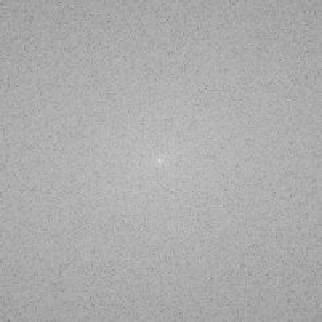Image Processing Reference
In-Depth Information
Fig. 10.13.
Left
: a real image that is not linearly symmetric. It shows a close up view of sand.
Right: The Fourier transform magnitude of a neighborhood in the central part of the original
image. Notice that the power is isotropic i.e., far from being concentrated to a line
a structure tensor that has a balanced direction component unless both images have
the same direction. Accordingly, the linear symmetry components do not add in a
straightforward fashion in the real matrix representation, causing an “interaction”
contribution to the balanced direction component. In effect, when merging two arbi-
trary images already decomposed into their component tensors, the linear symmetry
components add (matrix addition) first according to Eq. (10.50), possibly producing
a balanced direction term. This additional term should then be added to the sum of
the ordinary balanced direction tensor components of the two images.
The decomposition of the complex structure tensor is conserved and closed under
averaging whereas that of the real structure tensor is not. Paraphrasing,
averaging lin-
ear symmetry tensors
in their complex form yields linear symmetry tensors, whereas
averaging linear symmetry tensors in their real form may produce tensors that are
not linearly symmetric. This is because (i) the two components
I
20
and
I
11
add sep-
arately when merging or smoothing images, and (ii) these components are explicitly
linked to eigenvalues and optimal directions.
10.9 Conventional Corners and Balanced Directions
By using other algebraic functions of
λ
max
and
λ
min
, numerous measures to quanti-
tate the amount of linear symmetry can be obtained. Likewise, we can also measure
the lack of symmetry, which is the balanced directions property of an image.
Example measures include the energy invariant measure,
C
f
2
[28], for linear
symmetry,
C
f
2
=
|
I
20
|
I
11
=
λ
max
−
λ
min
λ
max
+
λ
min
(linear symmetry)
(10.51)




